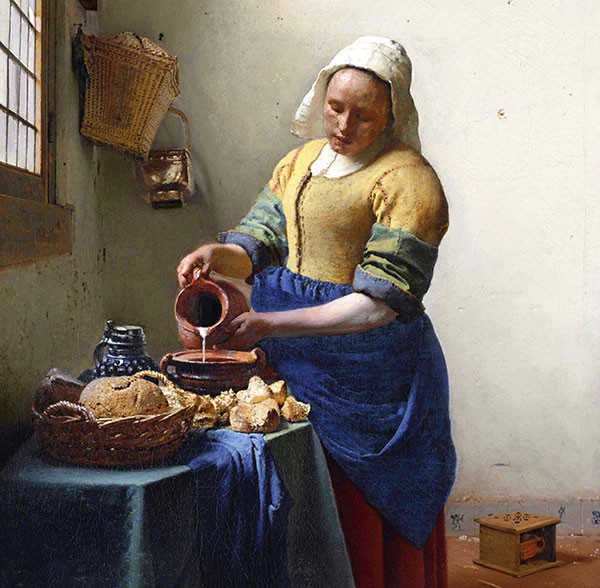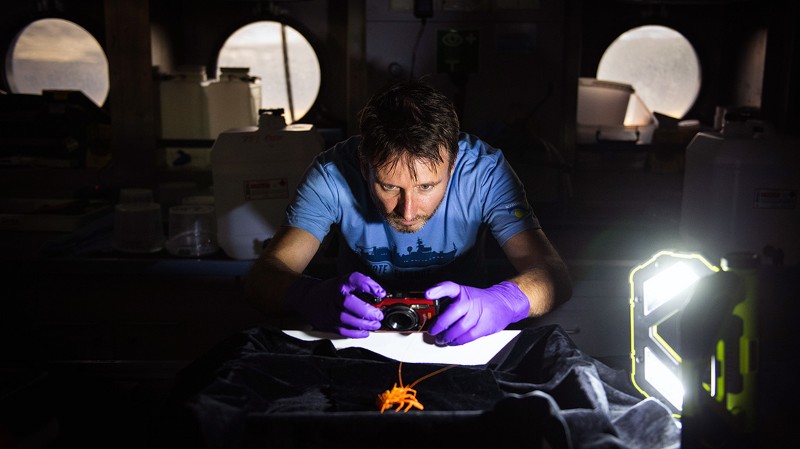Daily briefing: Black holes lead to the discovery of a link between entropy and energy
An electrifying discovery about black holes, serology surveys from hard-hit cities show we are nowhere near herd immunity to the coronavirus, and how precious ultramarine paint ultimately dulls the colours of Renaissance art.
by Flora GrahamHello Nature readers, would you like to get this Briefing in your inbox free every day? Sign up here

How paintings got the blues — and lost them
A blue pigment popular with Renaissance artists catalyses a chemical reaction that dulls the intensity of paint colours. ‘Ultramarine sickness’ has long been known to affect paints that include this pigment, but researchers now say that the pigment itself could speed up the oxidation of the oil component of the paint. “If you look at the structure of ultramarine it makes complete sense it has catalytic activity, as it is a zeolite and analogous to commercial catalysts,” says chemist Katrien Keune. Until the early 1800s, ultramarine was made from lapis lazuli found in the mines of Afghanistan, which was pricier than gold. A synthetic version seems to have less catalytic activity.
Source: Journal of Cultural Heritage paper
An electrifying discovery about black holes
The physics of black holes has led to the discovery of a basic link between entropy and energy. The idea began when theoreticians spotted a paradox about Hawking radiation, Stephen Hawking’s calculation that black holes must lose mass over an extremely long time. But if a black hole is even slightly electrically charged, after shrinking for eons it will get to a point at which its electric charge is extremely concentrated — which should prevent it from shrinking further, and perhaps even lead it to split into two smaller black holes. While studying this problem, theoretical physicists stumbled on a formula linking any object’s energy to its entropy — a measure of the number of ways an object’s parts can be rearranged without changing its state. Co-author Garrett Goon says that with the latest calculations, black holes give us hints about the nature of quantum gravity. “But maybe even more interesting, you’re learning something about more everyday stuff.”
Source: Physical Review Letters paper
COVID-19 coronavirus outbreak
We are nowhere near herd immunity
Even in the hardest-hit parts of the world, many fewer people have been infected than would be needed to achieve the herd immunity that might slow — but not stop — the outbreak. Serology surveys in places including Wuhan, Madrid and London have tested a cross-section of the population for antibodies against the disease. So far, the highest rate of infections found is around 20%, in New York City. That is well below the required level — something more like 60% (maybe) — to achieve herd immunity. There are many caveats around how the surveys are done and the accuracy of the antibody tests. And we don’t know for sure whether a past infection will give a person immunity, or to what extent.
The New York Times | 8 min read
NASA scientists are experts in remote working, social isolation and quarantine. Researchers who ‘work remotely’ with spacecraft millions of kilometres away, astronauts who volunteer to be separated from their families and psychologists who train space-farers for the challenge share their insights. Try to maintain, as much as possible, the structure of work and your productivity, advises operational psychologist James Picano. Astronauts feel best when they are working on their mission, no matter what adversity they are facing, he says.
Temperature and symptom checks, plastic desk shields, no hand shakes or fist bumps, and face coverings worn at all times — these are some of the sweeping recommendations from the US Centers for Disease Control and Prevention for a return to offices during the pandemic. “Replace high-touch communal items, such as coffee pots, water coolers, and bulk snacks, with alternatives such as prepackaged, single-serving items,” the guidelines say.
Notable quotable
“We may pass through this pandemic without knowing if this drug works or not.”
Physician Marcus Lacerda, the principal investigator of the first randomized controlled clinical trial to test chloroquine as a treatment for COVID-19, laments the politicization of the drug. Lacerda required police protection from death threats after his study found unfavourable results. (The Lancet Infectious Diseases | 4 min read)
Features & opinion
Take lessons from cancer evolution to the clinic
The first long-term study of how lung cancer evolves is revealing that therapies targeting multiple proteins in tumour cells could help to outpace the disease. Charles Swanton is the chief investigator of TRACERx, a study that is tracking 840 people from the moment of diagnosis. He explains how the project’s findings can help clinicians stay one step ahead of cancer.
Economists must collaborate courageously
Policymakers are having to combine insights from various disciplines at a time when they are massively overstretched and under pressure, writes economist Diane Coyle. To answer the many thorny questions about how to respond to COVID-19, we need collaboration across many disciplines to bring together new findings with old — and fast. “This challenge, like other global challenges looming, is the moment for the research community to prioritize synthesizing knowledge,” argues Coyle.
Five best science books this week
Andrew Robinson’s pick of the top five science books to read this week includes rehabilitating the Vandals, the bearded ladies of geology and how to get a job in academia.
Podcast: Hydrogen from water and light
After decades of research, scientists have managed to separate hydrogen from water with near perfect efficiency using a light-activated catalyst. Chemist Kazunari Domen and his colleagues fine-tuned the prototype system so that almost no energy from the absorbed photons is wasted — throwing open the door to producing clean, green hydrogen fuel from renewable solar energy. “I myself was actually surprised,” laughs Domen in the Nature Podcast.
Nature Podcast | 20 min listen
Go deeper with an analysis by materials scientist Simone Pokrant in the Nature News & Views article.
Reference: Nature paper
Subscribe to the Nature Podcast on iTunes, Google Podcasts or Spotify.
Where I work

Credit: Alex Ingle/SOI
“When you’re collecting sea-floor creatures in the abyss off the coast of Western Australia, just about every find is worth a closer look,” says zoologist Andrew Hosie. Hosie shares some of the unexpected encounters from his last trip before it was cut short by the coronavirus. “This beautiful crustacean is a squat lobster — most likely Galacantha rostrata is my best guess,” says Hosie. (Nature | 2 min read)
Quote of the day
“In American medicine, there are two eras: before Larry and after Larry. There is no question in my mind that Larry helped change medicine in this country.”
Physician Anthony Fauci speaks about influential AIDS activist Larry Kramer, who died on Wednesday aged 84. (The New Yorker, from April)
Read Fauci’s further remembrances of Kramer in The New York Times (5 min read)
Today our flightless feathered friend in formalwear, Leif Penguinson, is hiding among the surprisingly tightly packed rocks of Hickory Run Boulder Field in Pennsylvania. Can you spot the penguin?
The answer will be in Monday’s e-mail, all thanks to Briefing photo editor and penguin wrangler Tom Houghton.
Flora Graham, senior editor, Nature Briefing
With contributions by Smriti Mallapaty and Davide Castelvecchi